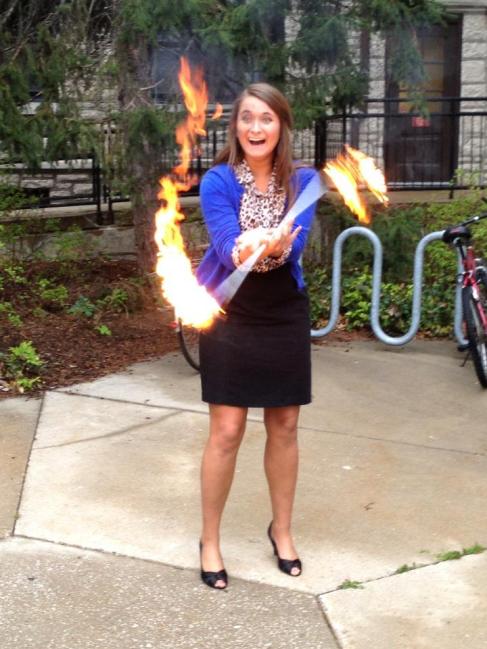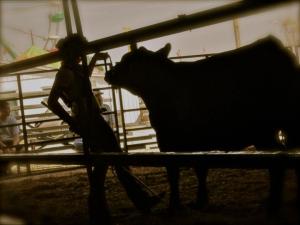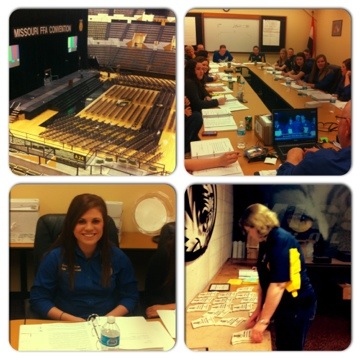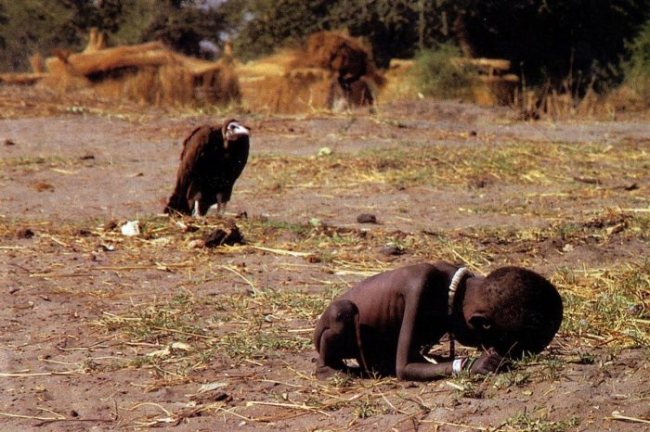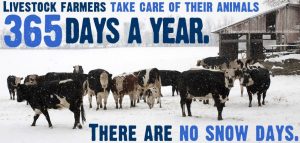Push the Envelope.
I’m definitely about to go all motivational speaker on you. I am apologizing now if by the end you think you have wings and can fly off into the sunset, lift a car over your head and throw it or even read people’s minds. Nope, I’m not that inspirational.
Anyway! Today’s order of business is the coined term “stepping outside of your box.” It is probably one of the most frequently heard terms in all of my leadership classes I take. “Why would this be stressed?” you may ask. I believe it is very important and it is mentioned frequently because growth occurs when you are uncomfortable with a situation, you analyze the situation and develop a decision-making strategy to help you understand the situation. This process is how we learn how to deal with all different types of situations in life, causing growth through experience.
For a leadership class of mine, we were assigned a project where we had to pick something that would assist us in growing personally. Now, whoever might know me, you would understand my choice for my project. For for the ones that don’t, I am not crazy.
I chose to twirl fire batons!
Growing up, I twirled for several years but forgot about the lost art in between FFA, basketball and other extra-curricular activities. This opportunity gave me the chance to add danger into my life and take a risk.
Sure, I could have lit my hair on fire. I could have burned my hands. Fire isn’t very merciful. The hair on my arms because shorter and shorter as it singed with time and practice. It was interesting to see how with time I became more and more comfortable with the baton and learned how to handle it with grace and poise.
The same aspect can be applied to agriculture and journalism. If you never take a chance you won’t make any progress. I am not a risk taker and this was challenging for me to do. In agriculture, you take risks by planting a new kind of crop on your land or by giving you cattle a new ration of feed. You are not always sure how it will turn out but you learn and progress either way. In journalism, you won’t have quality stories, photos, or multimedia pieces if you don’t try to get up in what is really going on, empathize and then report an unbiased piece that shows how real and genuine the story is. When you do that as a journalist, it makes your work very rewarding because people enjoy these kinds of pieces.
In the end, make room for a few risks in your life. If I twirled fire batons, I’m sure you can set your mind to whatever goal you want to accomplish and follow through! You have the ability to do anything you want through hard work and persistence. It doesn’t apply to everything (lets just say I’m not a genie and you don’t have three wishes…) but it is important to stay optimistic and believe in yourself. You cannot accomplish anything without self confidence.
I challenge you to try something you have always wanted to do. I promise you won’t regret it…I didn’t!
-TAL
Digital Storytelling
“It’s not what you say, it’s how you say it.”
For the past two semesters, I was in a scholars program for sophomore standing students at the University of Missouri. This program honors the memory of the late Jerry Litton. Litton was a congressman from Chillicothe, Mo. who attended MU and like me, was an agricultural journalism major.
Jerry Litton was nationally known Charolais cattle breeder and worked tirelessly to make the breed more prominent in the United States. He was a brilliant public speaker for the National FFA Organization and influenced countless lives through his speeches and Code for Impactful Living. He was a driven and hardworking man who fulfilled one of his lifelong goals to become a US Congressman by the age of 35.
On August 3, 1976, an airplane accident took Jerry’s life. With him were his wife, Sharon, and their two children, Linda and Scott.
He dies on the night he had won the primary race for a U.S. Senate seat, and was flying to Kansas City, Mo., to celebrate. He was only 39 years old.
Jerry has managed to remain in the hearts and minds of countless people, through the efforts of the Jerry Litton Family Memorial Foundation. This foundation has helped build an education center in Chillicothe, Mo., as well as a football stadium for the Chillicothe High School. They established and continued scholarship funding, and recently created the Jerry Litton Leadership Scholars program and the University of Missouri-Columbia.
Jerry was a brilliant communicator, storyteller and agriculturalist. I hope to model my career after him someday.
Last night, our group of scholars traveled to Chillicothe, Mo. to join with the members of the Jerry Litton Memorial Board of Directors. At this meeting, they showed the video that I have attached to this post, which I produced. I believe the best way to share your passion for anything is to share it. This was our idea as a group, as we could make a video of us telling our story about our futures in the agriculture industry.
The video is called “I am Agriculture.”
Hopefully our futures in agriculture will pay a strong tribute to Jerry Litton and his Board. The scholars program is in it’s first year and was started to help set a good foundation for students to be leaders in the College of Agriculture, Food and Natural Resources.
Digital storytelling is one of journalism and agriculture’s strongest tools. As future leaders in the industry we we anxious to share our passions.
Enjoy!
-TAL
Check out our blog as well!
A progressive passion: I love beef!
One thing that ties everything together for me is passion. This intense enthusiasm and optimism can be seen in anything I do. I discovered this passion through my activities growing up such as 4-H, FFA, showing and judging livestock and public speaking. The leadership I share with my peers in the Litton Leadership Scholars Cohort was discovered through these agricultural activities.
My main passion is for my cattle and the beef industry. I have been raising and showing Angus cattle since the age of eight and I hold this opportunity very close to my heart. Throughout high school and into college, I have been active in the Missouri Junior Angus Association (MJAA) and the Missouri Junior Cattlemen’s Board of Directors (MJCA.) These organizations have helped me develop my interest, knowledge and other skills relating to my cattle. Today, I currently serve as Missouri Angus Queen and am still active in the MJAA and MJCA. I am a sophomore science and agricultural journalism major and I hope to use the knowledge I obtain here at the University of Missouri to benefit the promotion of cattle farmers and ranchers and their livestock in the future.
My favorite speaking point about beef is how important it is to our health and well being. Beef is known for packing a punch for protein. Protein is vital to our organs, muscles, bones and other body tissues for their development growth and maintenance. A 3oz., 95 percent lean cooked serving contains 22g of protein- that’s almost half of your daily-recommended serving. Beef also boosts the immune system. Due to the zinc content, the elderly and pregnant women may have a lesser chance of getting sick. Zinc is known to keep the immune system up and running strong. Combine zinc with the great flavor of beef and see an easy way to keep healthy.
Beef truly has a competitive advantage over other sources of protein because of the large amounts of zinc, iron and protein along with other vitamins and minerals such as selenium, phosphorous, niacin, riboflavin, vitamin B12 and B6. Beef is the perfect choice for any meal in order to get the right amounts of all your daily nutrients.
Another thing I like to discuss about my cattle and the beef industry is leadership. I learned how to be a leader through exhibiting my cattle, working inside and outside the show ring and at the farm with my dad. Through raising and showing cattle, it has taught me to think on my feet, be a good decision maker and it has taught me how to lose gracefully. I have learned to make new friends even through competition. I have learned how to work under pressure and to deal with something that has an invariable result. I have discovered that all things don’t come for free- it takes hard work, determination, and strength to get the outcome you desire. These lessons have taught me how to follow. In order to be a good leader, following must be the first step mastered. I can now apply this knowledge to my life as I grow older and progress into my career.
In the future, I hope to work for a public relations agency, serving beef or dairy clients. I want to make sure the consumer can clearly understand the message from producers. Hopefully, I can eliminate any misconceptions about beef products and their benefits to our health. I hope my past experience and passion for the beef industry will help me better serve the agriculture industry.
I am @the_ag_lady on twitter I would love for you to follow me to help me spread knowledge and awareness of current events occurring in the agriculture industry.
-TAL
Missouri’s 85th FFA Convention to be held in Columbia
Top left: The Hearnes Center is all ready for the 85th Missouri FFA Convention. Top right: Missouri FFA State FFA Officers prepare for sessions on Thursday and Friday. Bottom left: Missouri FFA State Officer, Samantha Gibson, candidly poses during the officer meeting. Bottom right: Lisa Evans, Central District Supervisor, sorts plaques for the award ceremonies.
COLUMBIA, Mo. , April 16, 2013 — Blue corduroy jackets will flood Columbia on April 18 – 19, to honor fellow members for outstanding achievements, conduct association business, elect new officers and participate in leadership workshops at the 85th Missouri FFA Convention.
Value The Past, Embrace Your Future is the theme for this year’s annual convention, which is expected to attract more than 8,000 students and guests to the Hearnes Center on the University of Missouri campus.
For the past year, the Missouri FFA State officer team has been working hard to plan this year’s convention. Missouri State FFA Officer, Samantha Gibson, says she’s ready to get the ball rolling. “I can’t wait to see all the hard work that we’ve done this year finally be put into action.”
The Missouri FFA Association has 25,062 members, ranking fourth as a state in membership. FFA strives to make a positive difference in the lives of students by developing their potential for premier leadership, personal growth and career success through agricultural education.
Ethics: Walking the Fine Line
In my multimedia journalism class on Monday, we discussed the ethics of journalism. Ethics in journalism can be very hard to define and very hard to practice depending on the story and the situation. When it comes down to it…I have to ask myself, as do many other journalists, “would you publish this? Would you deal with the consequences of social media? Would you deal with the possibility of getting fired?” Many questions come to mind.
So, when it comes to making a choice, it is a very hard thing to do. You can either publish something legendary and make yourself known, or lose credibility in your work, lose your job or even be banned from the industry completely. It is honestly a personal choice. You make the call, that’s why it is your ethical decision.
In class, our professor used this picture as an example:
Would you as a journalist allow a famished child to lay there as it is prey for a vulture? The food chain is backwards and it is an incredibly moving and honest photo that captures the ideas of how many people are dying from starvation around the world. But still, as a human being, would you allow another human to be eaten by an animal? That is where I would personally draw the line.
In agriculture, there are new laws in progress to protect farms, CAFOs and different large operations from outside media that could be used against the industry. Critics call them “Ag-gag” bills. One of the group’s model bills, “The Animal and Ecological Terrorism Act,” prohibits filming or taking pictures on livestock farms to “defame the facility or its owner.” Violators would be placed on a “terrorist registry.”
These undercover videos have caused immense damage to our industry over the past 5 years and will continue to be produced. However, as an agriculturalist, it makes us seem like we have something to hide.
This is where ethics plays in! On our farms and ranches, we do everything for a reason. There are many practices and jargon we use that the common public doesn’t understand and can be hard for them to take unless they know the purpose behind it. I feel like if consumers can’t come out to our farms, we should bring our farms to them. Then they would feel more comfortable with why and how we do things. Through video, we can be completely honest about these practices instead of making laws to stop others from coming in and manipulating farmers and ranchers’ situation.
I completely understand why these are in the process! We need to protect our farmers and ranchers from media which can tear down our industry. However, I feel through honesty and ethical actions we can be openly honest about why and how we do things in agriculture.
For more information about making the taping of farm cruelty a crime visit: http://www.nbcnews.com/business/taping-farm-cruelty-becoming-crime-1B9251810
-TAL
Digital Storytelling: the good, the bad and the ugly
Digital Storytelling was the topic of our multimedia lecture this Monday.
How perfect and relevant is that topic!?
A lot of my other posts support my enthusiasm for “telling your story” but this time I will focus on the more digital aspect of it. Digital storytelling is a way to narrate your story via various digital outlets such as film, animations, still photos, audio, blogs, and whatever else that can help you present information to an audience. Traditional “Storytelling” is more of a lost art, however, there is always a good opportunity for a comeback! This new trend is spreading worldwide and there is a ton of opportunity in it, especially in agriculture.
I was discussing with a friend yesterday about the importance of communication in the agriculture industry. It is insane how many agriculturalists, farmers, ranchers and industry professionals have blogs, twitters and Youtube accounts that provide great information for the public. However, these media outlets often don’t reach the right audiences and are left to slip through the cracks. Trust me, after all the part work we put into these media pieces, even after a long day on the farm and at work–these need to be shared and seen by the correct audience! They MUST, or else it is a waste of time and energy. Seems like the only digital storytelling that makes headlines is something criticizing the industry or some new research that puts us down. It’s time to change that. Plus, there always seems to be a larger audience of the critic side because they are all familiar with how to use these technologies to produce high quality media. How will our farmers and ranchers find time on top of all they do to learn a whole video editing software? It’s just not feasible.
However, I feel like it is more genuine if it isn’t professionally done. Now, I’m all about and for creative, well produced media–but it’s more believable from a consumer standpoint if it’s not over exaggerated. Then, it seems like we have hidden agendas.
The easiest way to do this is through making a iPhone video showing what you’re doing to take care of your animals or how you’re practicing good waste management! Those are just some examples. The main reason we want to share this information is because we want to share the correct way we do things, hopefully eliminating misconceptions. If we put a face to our local farms and ranches, it’s more believable to the consumer what they are actually getting at the store!
It’s all about clarity and transparency while communicating to the audience. These aren’t the easiest things to do, but if we tell the truth people will learn to understand why we do certain things. That we don’t use certain practices for selfish reasons, that we do certain things because it is best for the animals or crops. This is good storytelling!
In lieu of good storytelling, there are many more bad storytellers in existence than good ones. Here is an example of bad storytelling, which is a spin off of the Dodge Ram Super Bowl commercial. It just puts a bad taste in my mouth. Not only is it bad storytelling but it is also biased and ugly to watch.
Obviously, people should fact check before they put out information that isn’t true. I am not saying the video is a complete lie, but through our personal storytelling we can help provide confidence in our industry and eliminate these misconceptions.
-TAL
Choice Words
What you say can change someone’s perspective on life. What matters even more is how you say it.
A professor of mine, who actually falls in my college which is the College of Agriculture, Food and Natural Resources here at MU, had some advice to share with our class today. As we were adjourned for class he had a few words of “wisdom” from which I was taken aback. He said, “Don’t eat red meat! It’s bad for you!”
Now, little miss beef girl over here thought it was pretty hard to sit still in her seat. Good thing we had the opportunity to leave. What I do regret is not correcting him.
In Monday’s lecture, we had guest speakers which were a select group of students who presented about the effectiveness of social media. They reminded us about the power it has and how it is to remove things that may have an impact on your career life in the future. I feel like this is drilled into our heads as students very frequently. However, they have a very valid point.
In agriculture, we are outnumbered by the amount of bad advertising through social media. It is very overwhelming how many different activists express their opinion. These strong opinions range from animal rights to GMO’s, and from CO2 to runoff. It is hard for people in ag to monitor and correct these different opinionated posts. So as an “agvocate” myself I strongly regret not taking the final step, especially in person, to discuss and correct his misconceptions about red meat.
Remind you, this professor is old. I would guess around the age of 85. Despite his age, he is one fiery old man who loves to express his opinion. His class is composed of multiple presentations from every student in the class and they have to choose a controversial topic and make their case to him. Sadly, I didn’t hear any presentations about beef today but somehow he felt compelled to tell us that red meat was bad.
SO! for any of you readers, or journalism professors by golly… here are the FACTS about red meat and why it is important to a balanced diet.
Let’s just say my professor will be hearing from me very soon, perhaps receiving an email filled with beef nutritional facts will help him keep his opinionated mouth closed, especially at a university setting. The proper research has been done about beef and red meat for health in general and I find it hard personally not to take these facts into consideration.
Beef is a great source of zinc, iron and protein as well as a lean choice! Here are some more facts about the nutrients one can get from incorporating beef into your daily diet.
Well, till next time. Meanwhile, I expect all of you to eat a big juicy steak.
-TAL
Communicating With A Purpose
Strategic. Decisive. Pivotal. Urgent.
To be all of these words, you need to know where you’re going. Perhaps even have a game plan on how to get there. In lecture on Monday in my Multimedia Journalism class we had a few guest speakers on different tracks we can follow for our studies in the J School. One of them was the Strategic Communications track.
I decided on this track to be the one I follow after understanding what a strategic communicator does, which is to communicate over a short or long span of time with goals, strategies and an idea which they can manipulate to serve their audience or client to reach their ideal audience. Basically, we want to make sure everyone is on the same page.
Now how does the start comm track relate to my major, science and agricultural journalism? –It relates perfectly.
In agriculture and science, we have menu controversial topics hitting the news at all times. We often get bashed by consumer reports and critics, who enjoy telling us how to do our job. We are bashed by criticism by those who do not support our industry and questioned by those who are unsure. We need a strategic communications plan in the agriculture industry. We have to analyze our audience, develop a purpose to communicate, and ensure that our audience understands what we are talking about.
Our audience is often lost by the jargon and terms we use and different practices they misunderstand. My goal as a future strategic communicator is to 1.) tell our story (as if you haven’t heard this one ;] ) 2.) and tell this story with clarity so it is transparent for any consumer to understand. I completely understand the importance of slowing down and taking the time to help others grasp the purpose of our industry.
Honestly, I feel like we lack support because we are not willing to slow down and take the time to explain what we do and how we do it, especially the most important one WHY we do these things we do here in ag! We would have many more supporters of our products and our industry if we took the time to share our love and passion with them and slow our roll to help them grasp our complicated tasks and responsibilities.
In reality, they don’t understand. In reality, it’s mostly our fault.
Thank goodness for strat comm. Strategtic Communications is the most important track here in the Missouri School of Journalism. That means we will have many students willing to work to communicate effectively to consumers all around the world–now the hard part–helping them understand agriculture too and trusting them to tell our story. Many of my ag journalism friends are strat comm because they recognize the need and importance of this track. I look forward to starting these classes in the fall and hope to prepare myself to tell the world about agriculture in the future.
-TAL
Check out Buzzard’s Beat Blog for some cool agricultural topics going on!
http://buzzardsbeat.blogspot.com/2013/03/chipotle-not-that-natural.html
Convergence Journalism
I am just about snowed out. I don’t know about you… but three days off of school REALLY messes up my schedule. However, I am not complaining about the lazy snow days here at MU. Now, if I was at home it would be a different story.
Credit: University of Illinois Extension
But aside from me missing my cattle at home, I have found a new love while here at MU–convergence journalism. As we discussed in my Multimedia Journalism class lecture on Monday, it is an up-beat, fast-paced version of the class I am taking right now.
What does “convergence” mean? Well, convergence is the use of media with video and audio. In these pieces, we combine good sound bites with voice overs and pair it with broil and maybe even music to make a well-rounded piece that is easy for viewers to understand.
I work for MU Extension Cooperative Media Group and we produce about two convergence pieces per week about current topics in agriculture, MU or extension here in Missouri. I find these fun and fascinating to do because when you are through with all the editing and the shooting of interviews and broil–this convergence piece is something to be proud of.
These are great for social media and they are shared on Facebook, Twitter and Youtube all the time. Many agriculture communications firms compile these videos because they are a great way to share stories in agriculture. In the future, I hope to incorporate convergence journalism into my career and utilize it, whether it be about a client I am serving at an ag communications firm, or about my life at home on the farm or ranch.
These are the simplest ways to share our story-why not take advantage of this opportunity!?
-TAL

